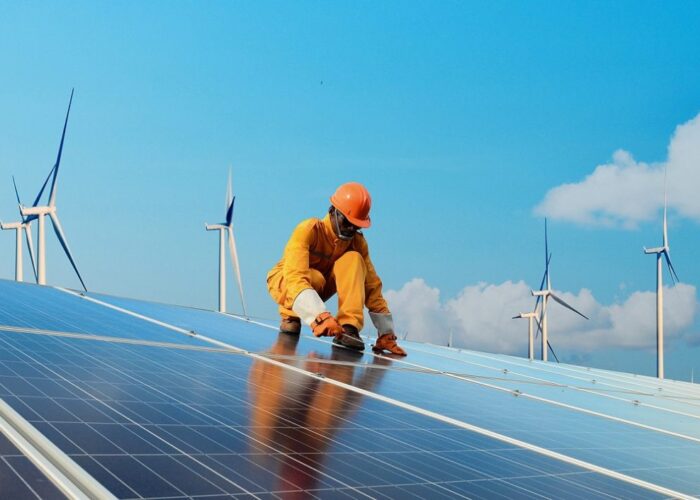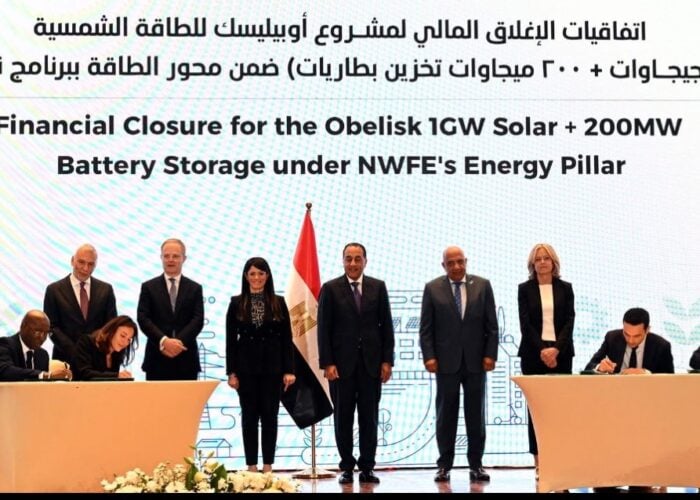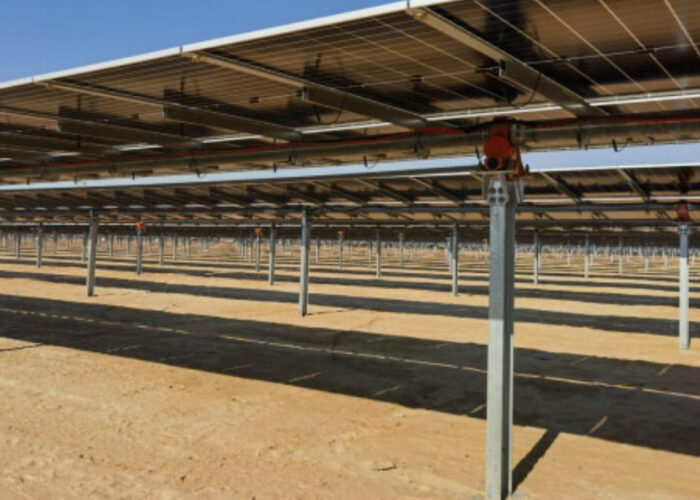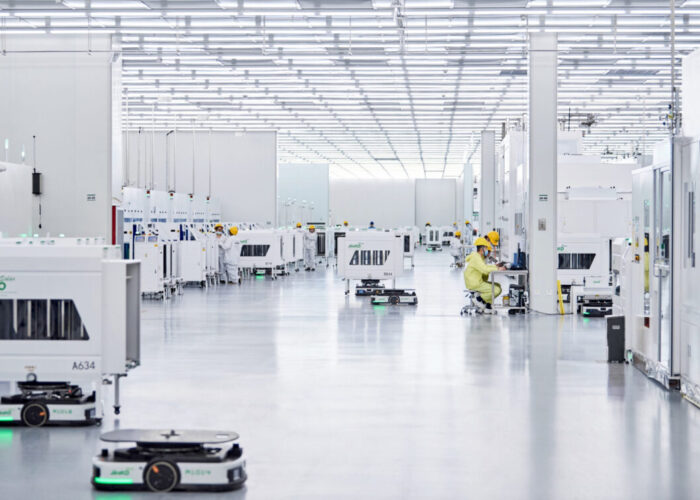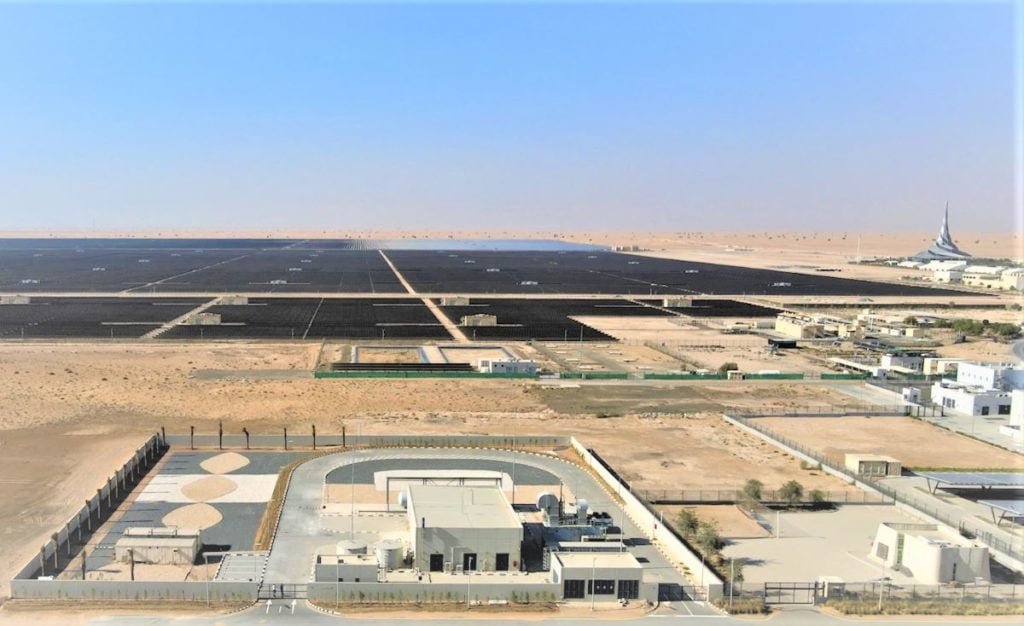
Scores of new green hydrogen projects have been announced in the Middle East and North Africa in recent months, as countries look to take advantage of high levels of irradiation and available space to deploy renewables. Jonathan Touriño Jacobo explores the challenges and opportunities for the region’s burgeoning green hydrogen sector.
Unlock unlimited access for 12 whole months of distinctive global analysis
Photovoltaics International is now included.
- Regular insight and analysis of the industry’s biggest developments
- In-depth interviews with the industry’s leading figures
- Unlimited digital access to the PV Tech Power journal catalogue
- Unlimited digital access to the Photovoltaics International journal catalogue
- Access to more than 1,000 technical papers
- Discounts on Solar Media’s portfolio of events, in-person and virtual
Home to some of the highest levels of solar irradiance, some countries in the Middle East and North Africa (MENA) are positioning themselves as major green hydrogen hubs globally and compete with the likes of Australia, Chile or Europe.
Even though green hydrogen is still a nascent technology with only a few pilot projects operational around the world – of which one is in Dubai – a few key countries are trying to get ahead of the game and have announced a plethora of projects at a gigawatt-scale in the past twelve months.
Key players in the region
When looking into the MENA region, most of the production of green hydrogen and green ammonia is aimed to be exported, says Ignacio Carreras, project development manager at renewables developer AMEA Power.
The region is already an exporter of ammonia for which it will be able to leverage the existing infrastructure, according to Claude Mourey, director of hydrogen and new energies in EMEA at research firm Wood Mackenzie, adding: “Currently, to export hydrogen there are two key demand centres: Asia and Europe. And there is no pipeline coming that can be used to actually bring this hydrogen to Asia and Europe.”
This puts the MENA region in an advantageous position to create a green hydrogen hub with the intention of producing green ammonia which will then be exported by ships to key demand markets.
For AMEA Power, the countries it is focusing on are those that have a combination of natural resources and regulatory frameworks where green hydrogen can be the most competitive, says Carreras.
In terms of natural resources, solar alone will not be enough due to the constant need for a power supply for the production of green hydrogen, despite its abundance in the region. Thus a balance between solar – which is more competitive – and wind is required.
Land availability is another aspect that will help the MENA region attract more projects, as at the moment many of the countries have plenty of land available for the development of renewable energy resources. This allows for projects of gigawatt-scale to be developed in the region and achieve a better economy of scale and competitiveness in terms of price production.
On the other hand, political stability and a regulatory framework that supports these projects are a must to be competitive in the international market, according to Carreras. “In order to be competitive, you need to achieve certain economies of scale,” he says. “These economies of scale means that you need to make very large projects. And that’s why you’re seeing this massive scale of projects of minimum 1GW.”
Among the key players for the production of solar-powered green hydrogen projects, four countries – Egypt, Morocco, Saudi Arabia and Oman – are placing themselves ahead in the competition, according to Carreras. “These are probably the top four. Then there are other countries which are well positioned but will need some other combinations, like Tunisia or even the UAE.”
Saudi Arabia, the UAE and coastal and southern areas of Oman have good solar potential, says Mourey.
Egypt – which has a good combination of solar and wind resources that couple well together as wind picks up at night, according to Carreras – has been drastically increasing its interest in green hydrogen projects, and further demonstrated it when it hosted COP27 in 2022. “COP27 has been really helping in fast-tracking several project initiatives,” says Mourey.
During COP27, Egypt put green hydrogen as a key technology for the decarbonisation of its electricity resources and signed a plethora of green hydrogen projects. With no less than eight framework agreements – including deals with AMEA Power, Fortescue, Globeleq, Masdar and TotalEnergies – these would position the country to be a key global player in the exportation of green hydrogen and green ammonia. This is not counting the more than 20 memorandums of understanding Egypt signed for green hydrogen projects in the region.
Rather than creating an oversaturation of the market and cannibalisation between the companies, Carreras sees it as a positive: “This is something that is actually helpful for everyone.” Carreras adds that given these projects will need a common infrastructure to be developed – such as transmission lines and adapting ports and storage facilities – this will help the companies be more competitive and attract more investors with the creation of a hub.
For example, an AMEA Power project in Egypt aims to produce 100,000 tonnes of green ammonia annually, which would be 1% of what Europe expects to import by 2030. “We could have 100 projects like ours, and this is only for Europe,” says Carreras.
Furthermore, many of these projects involved a key public body that showcases Egypt’s interest to export the production of its green hydrogen or green ammonia with the General Authority for Suez Canal Economic Zone as many of the projects will be located in the vicinity of the Suez Canal.
Almost a third of the global container traffic passes through the canal, representing 12% of global trade, according to the International Chamber of Shipping.
Another key partner to help with the supply of Europe’s target of 10 million tonnes of renewable hydrogen by 2030 is Morocco. Its proximity with Europe and an existing gas pipeline that passes through the North African country and connects with some European countries could give Morocco an edge in terms of exporting its green hydrogen production without the necessity to transform it into ammonia, says Carreras. He adds: “Having this pipeline will help Morocco to be in a better position and in theory be faster than other countries.”
Meanwhile, Oman’s approach to attracting renewable energy and green hydrogen development is slightly different from its neighbours in the region, with the country forming a strategic partnership last year with oil giant bp to map out the best locations in terms of renewable resource potential. “It gives you an understanding of where are the best spots and once you really know where they are you have a competitive advantage for your hydrogen production,” says Mourey. It will also allow developers to save time in the assessment of the potential for a solar or wind plant and could save up an entire year in the project’s development, adds Mourey.
And if the Abu Dhabi Sustainability Week in January 2023 can give any indication of what to expect from the UAE at COP28, but also from other countries in the MENA region, green hydrogen is poised to have an important role in the event. Mourey expects the country is preparing to display all the different initiatives that are under development.
Importance of working with public bodies
One thing that all these countries have in common is how public entities have been involved in partnering with developers to build green hydrogen projects, especially at a gigawatt scale. Those are no longer an exception in the region, and thus getting the backing of government bodies remains important, especially for the projects that will primarily produce green hydrogen or green ammonia for exportation.
No matter the size of the project, having the government’s backing is absolutely necessary, says Manuel Kuehn, senior hydrogen executive at Siemens Energy.
Learnings from MENA’s first operational green hydrogen project
One of the first green hydrogen projects to be operational around the world, and the first in the Middle East, is a plant co-developed by UAE utility Dubai Electricity and Water Authority (DEWA) and energy development company Siemens Energy. The pilot project is currently operating in Dubai. Having the support of local authorities and the fact the project was tied with the Expo 2020 Dubai helped accelerate the project becoming operational.
“It’s important to find alliances that can really make things happen. In that particular case, the combination of having the local utility DEWA involved and also with Expo 2020, a relatively powerful organisation with a deadline, it helps get things off the ground,” says Manuel Kuehn, senior hydrogen executive at Siemens Energy.
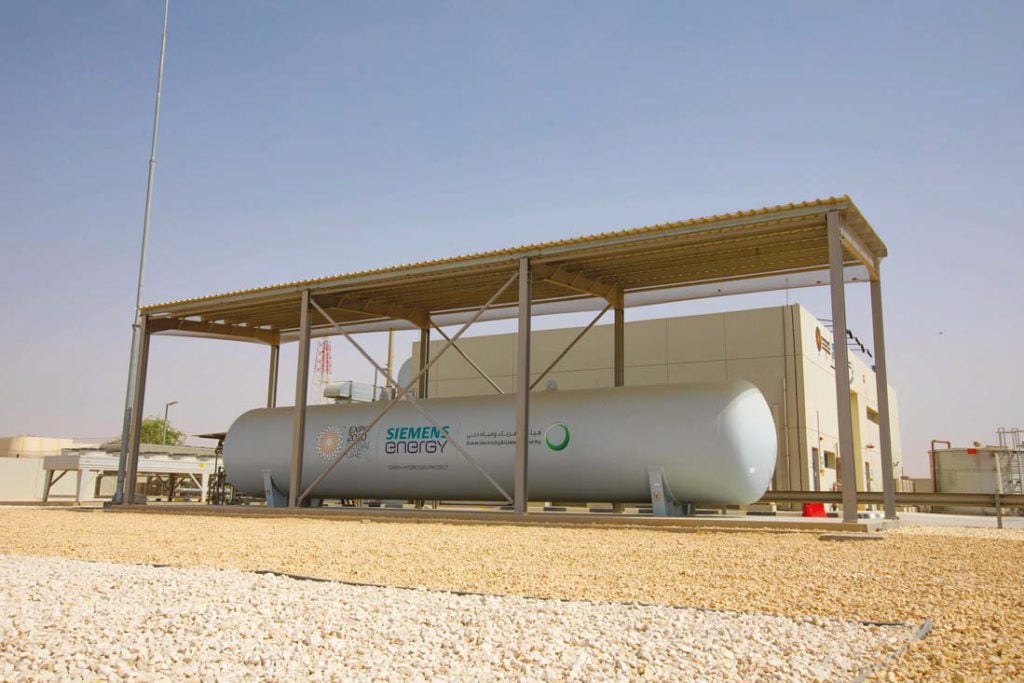
The pilot project helped Siemens Energy better understand how the green hydrogen plant, which is connected to a solar field, operates. And one of the first findings is that despite the location of the plant in a region with high irradiance, the output does not end up being the same, day after day, and always ends up with an anomaly (either due to a flock of birds, dust or clouds), according to Kuehn. He says: “One very interesting thing is that you would assume in a location like Dubai, where the sun always shines, that the output of your solar field is a bell curve every day, as boring as it could be.”
This is the reason why many of the gigawatt-scale projects announced will have a mix of both solar and wind, in order to lower as much as possible the intermittency of each, since even in regions where there is high irradiance there will end up being fluctuations which need to be diminished as much as possible in a green hydrogen plant.
“This shows us that even in a solar-to-electrolyser setup and also the planned and unplanned intermittency plays a bigger role than anticipated,” says Kuehn. Being able to see how the pilot project plant behaves while running on solar helped Siemens Energy gather crucial information for the construction of utility-scale green hydrogen plants and be better prepared for the intermittency of power it gets from solar PV.
Meanwhile, the choice of the electrolyser – be it alkaline, polymer electrolyte membrane or solid oxide electrolysis cell – will not be a factor differentiator, according to Kuehn, even despite the differences of flexibility each brings when powered up with solar energy. “There will be room for all the technologies at least in the next decade.”
For Carreras, working without the local authorities on large-scale green hydrogen projects would be impossible and lead to nowhere. Many parts of the project will involve working with the country’s authorities, be it on securing permits or coordinating the development of infrastructure. Carreras says: “In Egypt, we are talking about an infrastructure that will be located in the Suez Canal in Al Sokhna to produce hydrogen and ammonia. But the upstream, the renewable assets, are far away. More than 100 kilometres away. That’s where the winds and solar assets will be.”
Regulatory challenges for export projects
Partnering with public bodies can also help work around one of the main challenges when developing a solar- powered green hydrogen project in the MENA region: making sure to have the local authorities’ interest aligned with the project’s developers and have a common interest. “You need to keep in mind that these projects most likely will be focused on export. It could be a situation where the country gets very little [of the production],” says Carreras.
Aside from the creation of local jobs, these projects might end up getting the best locations for solar and wind performance and a transmission line to connect to the grid to have the optimal assets to power the green hydrogen plant. This is one reason why some of the projects in Egypt have local authorities or sponsors as investors in the projects, with some cost sharing in terms of infrastructure, according to Carreras.
Most importantly, one of the challenges to take into account when developing a green hydrogen plant in the region is to do with the fact that it will mostly be used for its exportation to other markets around the globe. This means that developers will need to factor not only the regulation in the country that has produced the green hydrogen, but also in the country it will be sent to, as these could in the future differ significantly. “I am exposed to the regulatory environment of the country I’m exporting to and exposed to the regulatory environment of the country where I installed my equipment,” says Kuehn.
The EU, one of the main markets that will be sourcing its green hydrogen from the MENA region, established two acts in February 2023 to help define renewable hydrogen production in the bloc, not just for domestic producers but also third countries looking to export into the EU.
The rules will be implemented in a transition phase, and setting stricter rules in order to prove the hydrogen was produced using renewable electricity. Other countries will follow suit, but at the moment there is no certainty that a common standard will be set worldwide or across several markets, forcing developers to work through different regulations – which could change with time – to be able to dispatch their production to as many buyers as possible.
One option could be for a project to oversize its solar and wind capacity in order to feed the grid later, with the hydrogen plant being powered when renewables are not able to dispatch any electricity, for which they will need to be certified green, says Mourey, adding: “This kind of arrangement is going to be very geography dependent and it would be policy driven. Some regions will say ‘yes, we accept it’ and others might say ‘no, we don’t accept it’.”
For Mourey, in the short term, the tendency would be to accept it in order to help kickstart the hydrogen economy, but regulations will be an important issue for developers as they could change over time and a project might no longer fulfil the requirements needed to consider the hydrogen or ammonia that they made is in fact green and made only with renewables.


